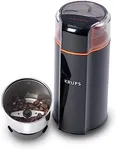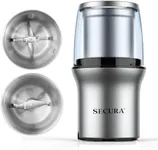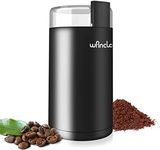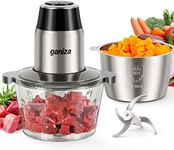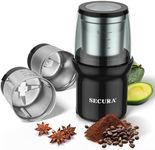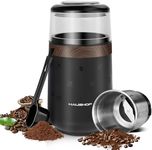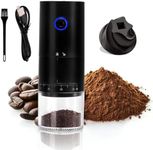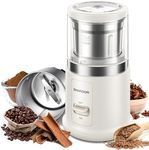Buying Guide for the Best Nut Grinders
Choosing the right nut grinder can make a significant difference in your kitchen, especially if you frequently use nuts in your recipes. A good nut grinder will save you time and effort, and ensure that you get the perfect consistency for your needs. When selecting a nut grinder, it's important to consider several key specifications to ensure you get the best fit for your requirements. Here are the main specs to look out for and how to navigate them.CapacityCapacity refers to the amount of nuts the grinder can hold and process at one time. This is important because it determines how much you can grind in one go. If you often need large quantities of ground nuts, a grinder with a larger capacity will be more efficient. For occasional use or smaller batches, a smaller capacity grinder will suffice. Typically, capacities range from a few ounces to several cups. Choose a capacity that matches your typical usage to avoid having to grind multiple batches.
Power SourceNut grinders can be manual or electric. Manual grinders require physical effort to operate, which can be a good option if you prefer a more hands-on approach or want to avoid using electricity. Electric grinders, on the other hand, are more convenient and require less effort, making them ideal for frequent use or larger quantities. Consider your preference for convenience versus effort when choosing between manual and electric models.
Grinding MechanismThe grinding mechanism is the part of the grinder that actually grinds the nuts. Common mechanisms include blades, burrs, and mills. Blades are typically found in electric grinders and can quickly chop nuts into small pieces. Burrs and mills, often found in manual grinders, provide a more consistent grind and can be adjusted for different textures. If you need a fine, consistent grind, look for a grinder with burrs or mills. For general use, blades may be sufficient.
MaterialThe material of the grinder affects its durability and ease of cleaning. Common materials include stainless steel, plastic, and ceramic. Stainless steel is durable and easy to clean, making it a popular choice. Plastic grinders are lightweight and often more affordable, but may not be as durable. Ceramic grinders are also durable and can provide a consistent grind, but they can be more fragile. Consider how often you will use the grinder and how important durability and ease of cleaning are to you when choosing the material.
AdjustabilityAdjustability refers to the ability to change the grind size. Some grinders offer adjustable settings that allow you to choose between fine, medium, and coarse grinds. This is important if you use ground nuts for different purposes, such as baking, cooking, or garnishing. If you need versatility in your grind sizes, look for a grinder with adjustable settings. If you only need one type of grind, a non-adjustable grinder may be sufficient.
Ease of UseEase of use encompasses how simple and comfortable the grinder is to operate. Features that contribute to ease of use include ergonomic handles, clear instructions, and simple assembly. If you plan to use the grinder frequently, look for one that is user-friendly and comfortable to operate. Consider any physical limitations you may have and choose a grinder that will be easy for you to use without causing strain.
Cleaning and MaintenanceCleaning and maintenance are important for keeping your grinder in good working condition. Some grinders are dishwasher safe, while others require hand washing. Consider how easy it is to disassemble the grinder for cleaning and whether the parts are easy to clean. If you prefer low-maintenance appliances, look for a grinder that is easy to clean and maintain. Regular cleaning will ensure the grinder remains hygienic and functions well over time.

